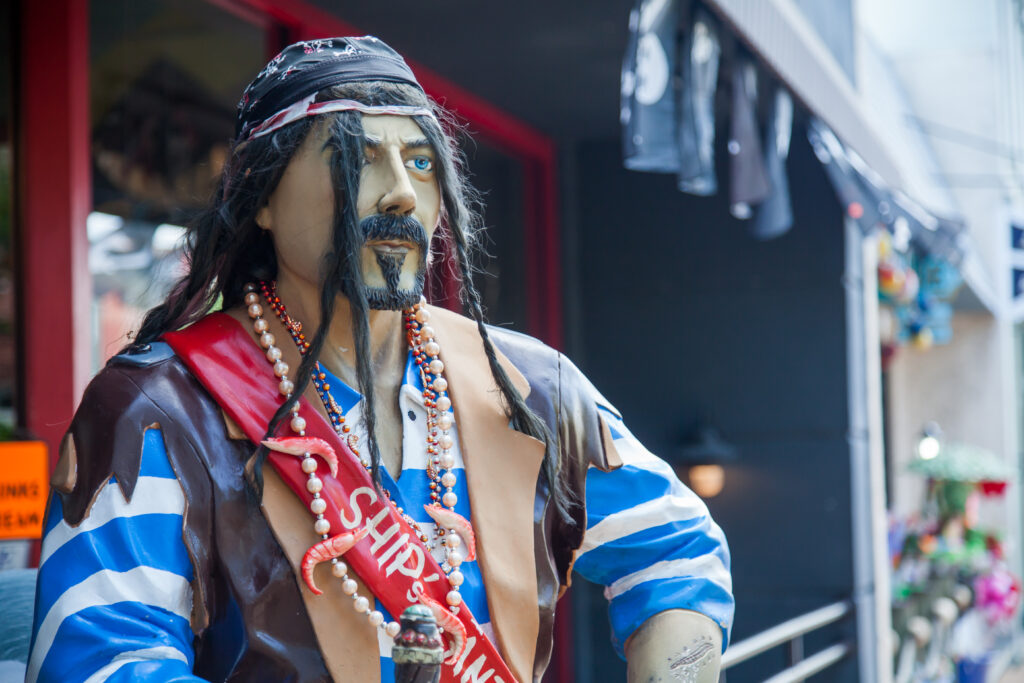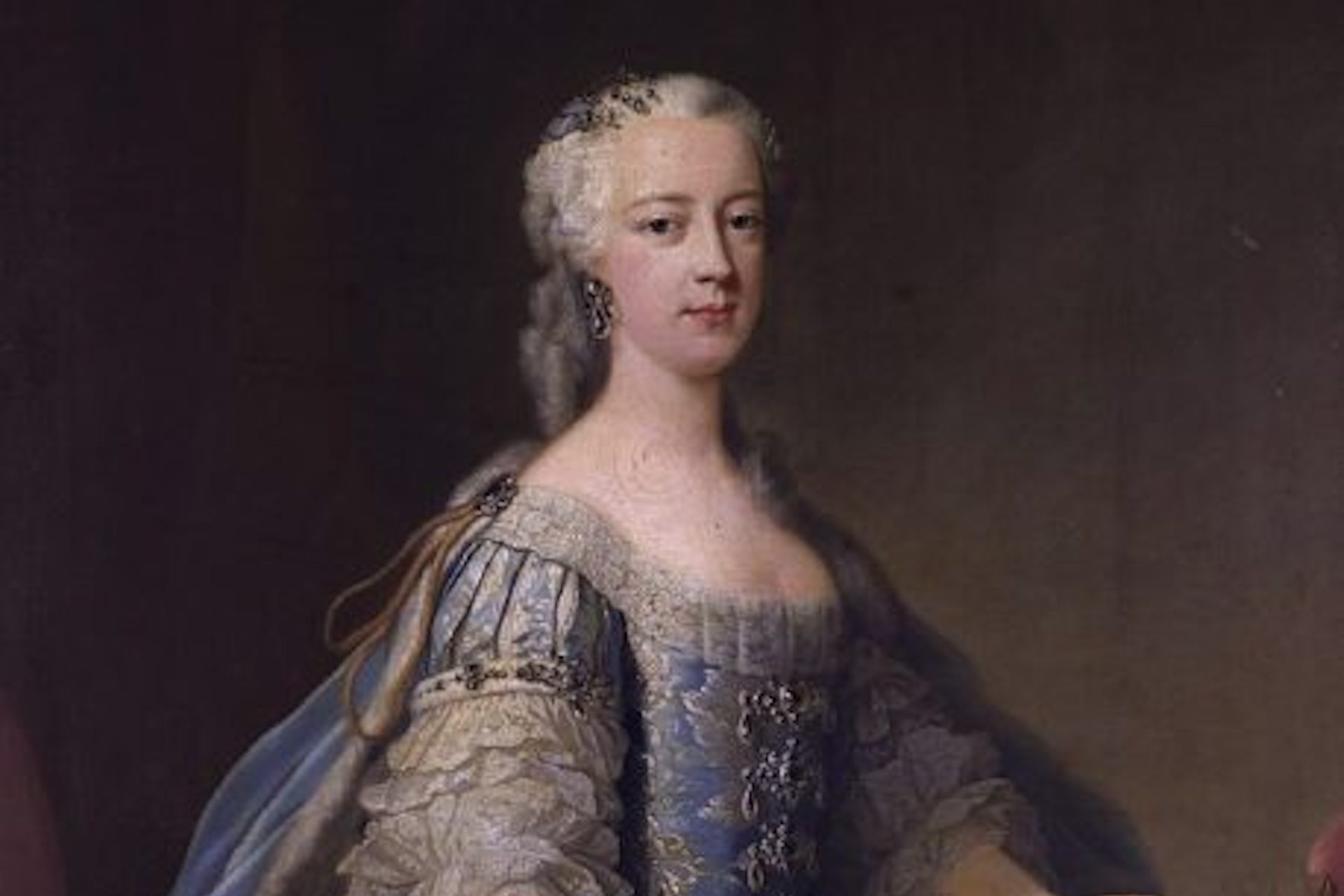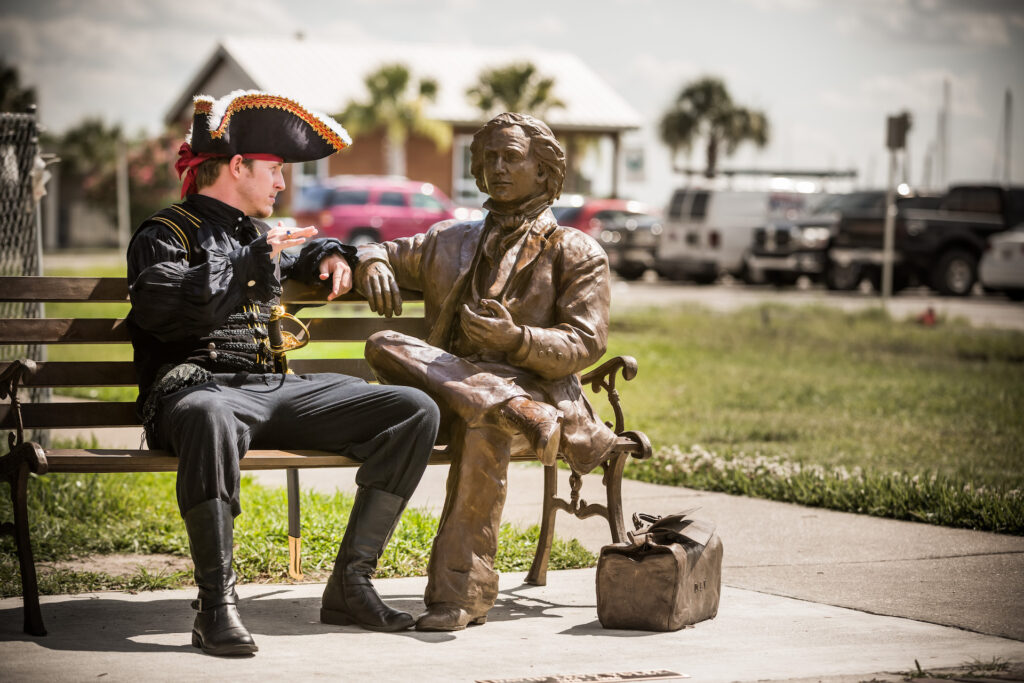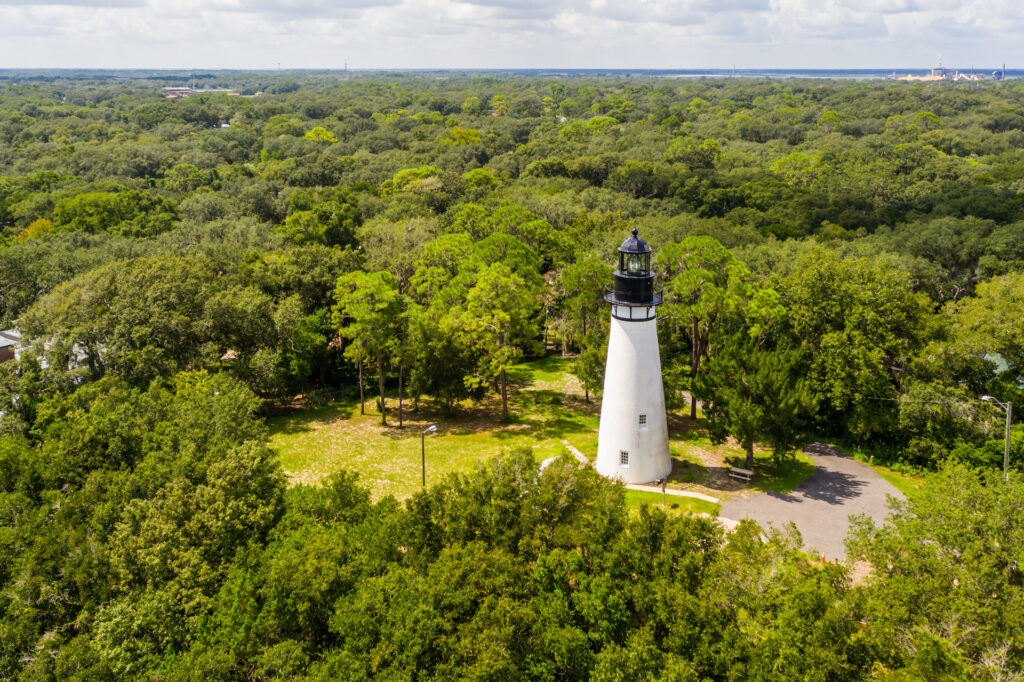
From notorious pirates and visionary leaders to civil war skirmishes and the Jim Crow era, Amelia Island has been the backdrop for many remarkable individuals and places who shaped not only the island but also the course of history. Let’s take a journey back in time to meet a few of these intriguing figures.
Pirates!

Shiver me timbers! Back in the 17th and 18th centuries, Amelia Island was a notorious haven for pirates. These swashbucklers weren’t just figments of Hollywood’s imagination; they were real individuals who terrorized the seas and sought refuge here.
- Blackbeard: Perhaps the most infamous of all, Blackbeard was known for his terrifying appearance and ruthless tactics. Legend has it that he buried treasure on Amelia Island, which remains undiscovered to this day.
- The Laffites: Brothers Jean and Pierre Laffite were French pirates who operated primarily in the Gulf of Mexico but were known to have visited Amelia Island.
- Luis Aury: A French privateer and pirate, Aury proclaimed Amelia Island as part of the Republic of Mexico in 1817, using it as a base for smuggling and piracy.
- Gregor MacGregor: A Scottish adventurer, MacGregor seized Amelia Island in 1817, declaring it the Republic of the Floridas, although his reign was short-lived.
Colonial Governors and the Shifting Powers

The control of Amelia Island has passed through many hands, each leaving its own influence on the island’s culture and history. Read all about the eight flags that have flown over the island and learn for yourself!
- Jean Ribault: In 1562, Ribault claimed the island for France, naming it “Isle de Mar.” This marked the beginning of European interest in Amelia Island.
- Pedro Menendez de Aviles: Just a few years later, in 1565, Menendez de Aviles captured the island for Spain, renaming it “Isla de Santa Maria.”
- James Oglethorpe: The founder of Georgia, Oglethorpe renamed the island “Amelia Island” in 1763 after Princess Amelia, daughter of King George II. His efforts were pivotal in transferring control of the island from Spain to Britain.
Notable Figures

Numerous other notable figures have significantly influenced Amelia Island’s history and culture. Here are a few standouts.
- José Martí: A key figure in Cuba’s fight for independence, Martí was involved with the Fernandina Plan, which sought to raise funds from Cuban patriots. His connection to Amelia Island highlights the area’s role in international movements.
- David Yulee: Known as the “Father of Florida’s Railroads,” Yulee played a crucial role in connecting Florida to the rest of the United States, significantly boosting the state’s development. He was also the first Jewish member of the United States Senate.
- Abraham Lincoln Lewis: In 1935, Lewis, the first African-American millionaire in Florida, purchased 216 acres of land on the south end of Amelia Island and named it American Beach. His investment was a bold stand against segregation, creating a haven for African Americans during the Jim Crow era.
- Mavynee Betsch: As the granddaughter of A L Lewis, Mavynee Betsch, affectionately known as the “Beach Lady” also left an indelible mark on both the environmental and cultural landscapes on Amelia Island – namely American Beach. Learn more about Mavynee, A L Lewis, and American Beach at the A L Lewis Museum.
Notable Places

Historic places across Amelia Island have played a pivotal role in shaping its identity, leaving a lasting impact on the island’s culture and evolution.
- The Florida House Inn: Built in 1857, this historic inn housed Union officers during the Civil War and later became a favored retreat for some of America’s most famous figures, including the Carnegies and Rockefellers, U.S. President Ulysses S. Grant, automotive tycoon Henry Ford, and early film stars Mary Pickford as well as Laurel and Hardy.
- The Palace Saloon: Between 1880-1910, Fernandina’s docks were among the busiest in the south. Many saloons lined the lively downtown streets but only one bore the distinction of being the “Shipcaptain’s Bar”, and that was The Palace. Originally constructed as a haberdashery in 1878, when the Prescott building was purchased in 1903, shoes were replaced with booze and the rest is history.
- Amelia Island Lighthouse: Originally built in 1820, the Amelia Island Lighthouse stood on Cumberland Island just across the channel from Amelia Island. However, changes in the channel made the “Cumberland Tower” ineffective so it was completely dismantled brick by brick and reconstructed on Amelia Island where its light still guides in ships to this day.
- Fort Clinch: Originally built to defend the strategic port of Fernandina, Fort Clinch was twice seized by Union forces during the Civil War. Today, this well-preserved fort is part of a 1,500-acre state park with daily tours & reenactments, hiking & biking trails, beach combing, sunbathing, swimming, and surf fishing.
Amelia Island is more than just a beautiful vacation spot; it’s a place where history comes alive. Learn more about these historical figures and places at the Amelia Island Museum of History and A L Lewis Museum. Or, take a tour with one of several historic tour companies.